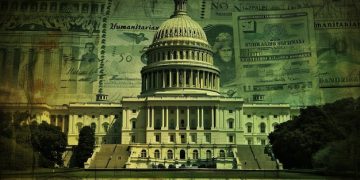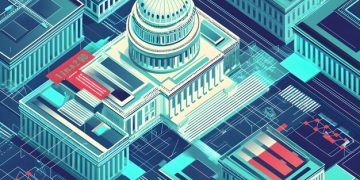The Future of US Politics: Third-Party Candidates and the Two-Party System
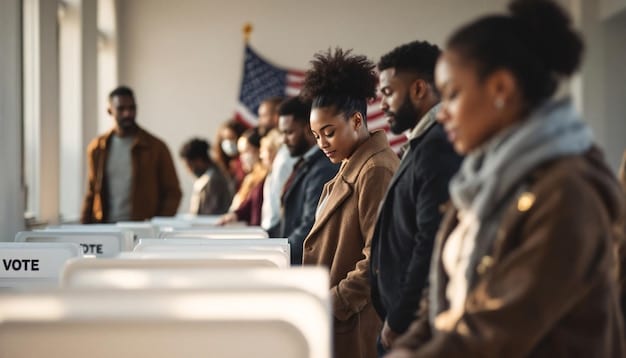
The Future of the Two-Party System: Analyzing the Rise of Third-Party Candidates involves examining factors like voter dissatisfaction, changes in political alignment, and the impact of social and economic trends on the dominance of the Democratic and Republican parties in the United States.
The American political landscape has long been dominated by the Democratic and Republican parties, but shifts in voter sentiment and the emergence of viable third-party candidates are prompting discussions about the future of the two-party system: analyzing the rise of third-party candidates. Could these alternative political movements reshape the balance of power?
Understanding the Two-Party System in the US
The two-party system has deep roots in American history, shaping the nation’s political discourse and governance for centuries. Understanding its origins and how it has evolved is crucial to analyzing the potential impact of third-party candidates.
Historical Roots of the Two-Party System
The emergence of the Federalist and Anti-Federalist factions during the ratification of the Constitution laid the groundwork for the two-party dynamic. Over time, these factions evolved into recognizable political parties.
Evolution of Major Parties
The Democratic and Republican parties have undergone significant transformations throughout history. From the Jacksonian Democrats to the modern Democratic Party, and from the Whigs to the Republican Party of Lincoln, each party has adapted to changing societal needs and political ideologies.
- Early American political factions developed into the Democratic-Republican Party and the Federalist Party.
- The Democratic Party, as it is known today, emerged in the 1820s.
- The Republican Party was founded in the 1850s as an anti-slavery party.
- Party platforms and ideologies have shifted significantly over time.
The two-party system has shown remarkable resilience, adapting to major historical events and shifts in public opinion. However, the rise of third-party candidates suggests that this system may be facing unprecedented challenges. The core tenets of each party have seen updates and overhauls based on current situations.
Factors Contributing to the Rise of Third-Party Candidates
Several factors are fueling the rise of third-party candidates in American politics, including voter dissatisfaction, political polarization, and a perceived lack of representation by the major parties. These elements combine to create an environment ripe for alternative political movements.
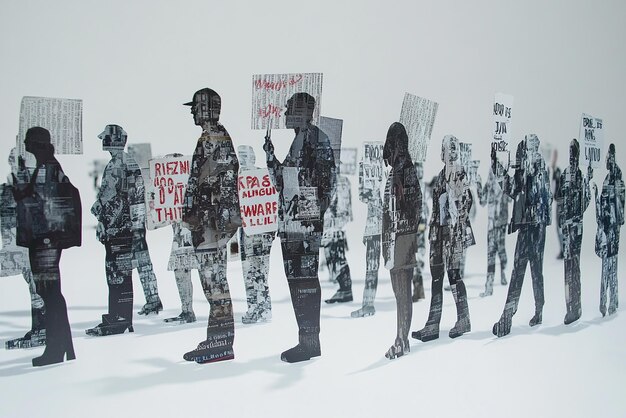
Growing Voter Dissatisfaction
Many voters feel disenchanted with the Democratic and Republican parties, believing that they are out of touch with the concerns of ordinary Americans. This dissatisfaction can lead voters to seek alternatives outside the established political framework.
Political Polarization and Gridlock
Increased political polarization and gridlock in Washington have frustrated voters who believe that the two major parties are more interested in fighting each other than in solving pressing issues. This can create an opening for third-party candidates who promise to bridge the divide.
Third-party candidates often capitalize on voter discontent by offering platforms that address specific concerns ignored by the major parties. They can also attract voters who are ideologically aligned with neither Democrats nor Republicans. The constant disagreements make voters feel unheard.
Furthermore, the media landscape has evolved, providing more opportunities for third-party candidates to gain visibility. Social media, in particular, has become a powerful tool for these candidates to connect directly with voters and bypass traditional media gatekeepers.
Historical Impact of Third-Party Movements
Third-party movements have played a significant role in shaping the American political landscape, even though they have rarely achieved electoral success at the presidential level. Their influence can be seen in the adoption of their ideas by major parties and their impact on election outcomes.
Examples of Influential Third-Party Campaigns
Figures like Theodore Roosevelt (Progressive Party), Ross Perot (Reform Party), and George Wallace (American Independent Party) have mounted significant third-party campaigns that influenced the national conversation.
Impact on Major Party Platforms
Major parties often adopt ideas and policy positions initially championed by third parties in an attempt to broaden their appeal. This can lead to significant shifts in the political landscape.
- Theodore Roosevelt’s Progressive Party advocated for social and economic reforms that were later adopted by both Democrats and Republicans.
- Ross Perot’s focus on deficit reduction influenced fiscal policy debates in the 1990s.
- Third parties have historically raised awareness about issues like environmental protection and campaign finance reform.
Despite their limited electoral success, third parties have often served as incubators for new ideas and catalysts for political change. They can also play a spoiler role in elections, drawing votes away from major party candidates and influencing the outcome.
Challenges Faced by Third-Party Candidates
Despite the growing interest in alternative political movements, third-party candidates face numerous challenges in the American political system. These obstacles include lack of resources, ballot access laws, and media coverage.
Financial Disadvantages
Third-party candidates typically lack the financial resources of their Democratic and Republican counterparts, making it difficult for them to compete effectively. Fundraising is a constant struggle.
Ballot Access Laws
Many states have restrictive ballot access laws that make it difficult for third-party candidates to qualify for the ballot. These laws can vary significantly from state to state.
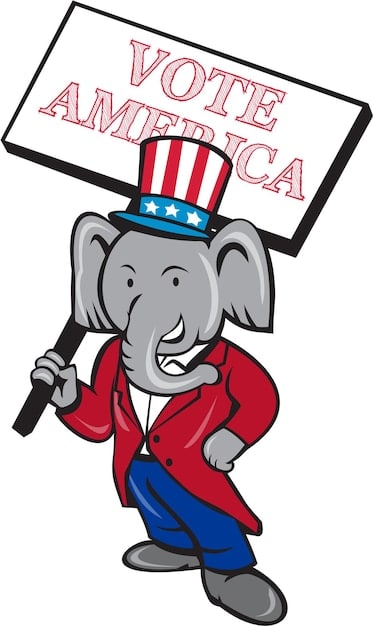
Furthermore, third-party candidates often struggle to gain media coverage, as journalists tend to focus on the two major parties. This lack of visibility can make it difficult for them to reach voters and build momentum.
Overcoming Obstacles
Despite these challenges, some third-party candidates have found ways to overcome these obstacles. By focusing on grassroots organizing, utilizing social media, and building coalitions with other political movements, they can increase their visibility and influence.
Potential Scenarios for the Future
The future of the two-party system is uncertain, but several potential scenarios could play out in the coming years. These include the continued dominance of the Democratic and Republican parties, the rise of a viable third party, or the fragmentation of the political landscape.
Continued Two-Party Dominance
The Democratic and Republican parties could continue to dominate American politics, despite the growing interest in alternative political movements. This scenario would involve the major parties adapting to changing voter demographics and policy priorities.
Rise of a Viable Third Party
A viable third party could emerge, challenging the dominance of the Democratic and Republican parties. This scenario would require a charismatic leader, a compelling policy platform, and a sustained grassroots movement.
Such a shift could lead to a more multi-faceted political environment, where no single party commands a clear majority. The implications include a more inclusive political system and shifting political alliances. This can cause more people to have their thoughts and feelings heard.
Alternatively, the two-party system could fragment, with multiple parties competing for support based on specific issues or ideologies. This would lead to a more fluid and unpredictable political landscape. A fractured system could require coalition-building and lead to diverse representation.
The Role of Voters in Shaping the Future
Ultimately, the future of the two-party system will be determined by the choices of American voters. By engaging in the political process, supporting alternative candidates, and demanding change, voters can play a crucial role in shaping the future of American politics.
The Importance of Civic Engagement
Increased civic engagement is essential for a healthy democracy. This includes voting, volunteering, and participating in political discussions.
Supporting Alternative Candidates
Voters can support alternative candidates by donating to their campaigns, volunteering their time, and spreading the word about their platforms. Every action can make a difference toward a better tomorrow.
- Informed voters help shape the political landscape.
- Active participation strengthens democracy.
- Grassroots movements can influence policy.
Demanding change from elected officials is another way voters can influence the political system. By contacting their representatives, attending town hall meetings, and participating in protests, voters can make their voices heard. It is important to stay in touch and be familiar with who is representing your area of the country.
The political winds are indeed shifting. The electorate is seeking change, and the rise of viable third-party candidates should not be dismissed. By remaining engaged, staying informed, and participating actively, voters will define the future political direction of the United States. The next few election cycles are certain to offer unexpected political challenges.
| Key Point | Brief Description |
|---|---|
| 🗳️ Voter Dissatisfaction | Growing discontent with major parties leads voters to explore third-party options. |
| 🏛️ Polarization | Political gridlock encourages voters to seek alternatives that promise consensus. |
| 📊 Third-Party Influence | Though rare, third parties influence debates and shift major party platforms. |
| 🚫 Ballot Access | Third-party candidates face challenges like ballot access laws and financial disadvantages. |
Frequently Asked Questions
▼
A two-party system is defined by a political landscape where two major parties dominate elections and governance. Minor parties may exist, but they rarely achieve significant electoral success. This dynamic has been evident in the US for much of its history.
▼
Third parties face considerable obstacles that include restrictive ballot access laws, a lack of funding, and limited media coverage. Additionally, the winner-take-all electoral system favors the two major parties by preventing smaller parties from gaining a foothold.
▼
Third parties can significantly influence the political agenda and public discourse. Major parties often adopt the ideas and policy positions of third parties to broaden their appeal, which can lead to genuine shifts in the political landscape.
▼
Heightened political polarization can expand the appeal of third parties, as voters grow frustrated with the binary choices offered by Democrats and Republicans. These voters may seek alternatives that promise to bridge the divide and find solutions.
▼
Voters can support third-party movements by actively participating in grassroots organizing, donating to campaigns, and using social media to spread awareness. Voters can champion change by demanding action from their representatives.
Conclusion
The shifting sands of American politics suggest a dynamic and evolving future for the country’s two-party system. While the Democratic and Republican parties have dominated for centuries, factors like voter dissatisfaction and the increasing visibility of third-party candidates invite important questions. Whether these alternative movements lead to a major shift or further fragmentation, the direction of American politics will depend on the choices of its voters.



